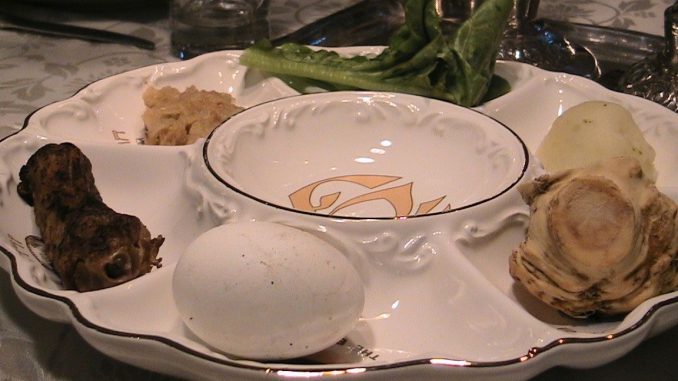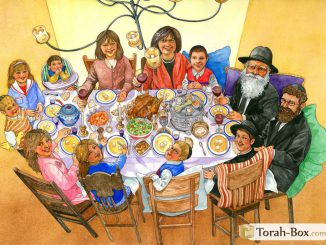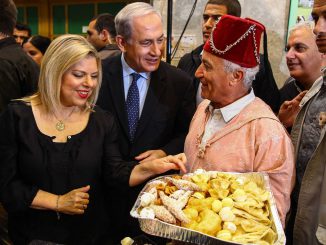
The night of the Seder, which means “the night of order”, is considered a highly important ritual within the celebration of Passover. It is the night of the first evening of Passover, corresponding to the anniversary of the miraculous exodus of the Jews and their liberation from the slavery imposed on them by Pharaoh.
Following the example of all their coreligionists throughout the world, Moroccan Jews, during this holy night, prepare a special food that they put on the Seder table, each element of which recalls a stage of their suffering at the time when they lived under the slavery of the Egyptian Pharaoh.
The Seder table contains an unfermented, flat and dry bread, the “Matsa” or “Rkak” as it is called by Moroccan Jews. This bread refers to the Jews’ rapid exit from Egypt in a hurry, even before their bread is fermented. A hard-boiled egg recalls the solidity of the Israelis. Bitter herbs, often horseradish (without additives) and romaine lettuce symbolize the bitterness of living conditions during slavery. The table may also include fermented bread from the last morning before the beginning of Passover, in addition to a bone to recall the sacrifice of the Passover lamb at the time of the Temple in Jerusalem. There are also nuts, cinnamon, wine and salt water.
After the prayers are completed, the Jewish families gather around the table, recite the “Haggada” and perform many religious rituals related to that night. The night ends with a delicious dinner of meat. All of these rituals have been handed down from generation to generation for thousands of years.




Be the first to comment